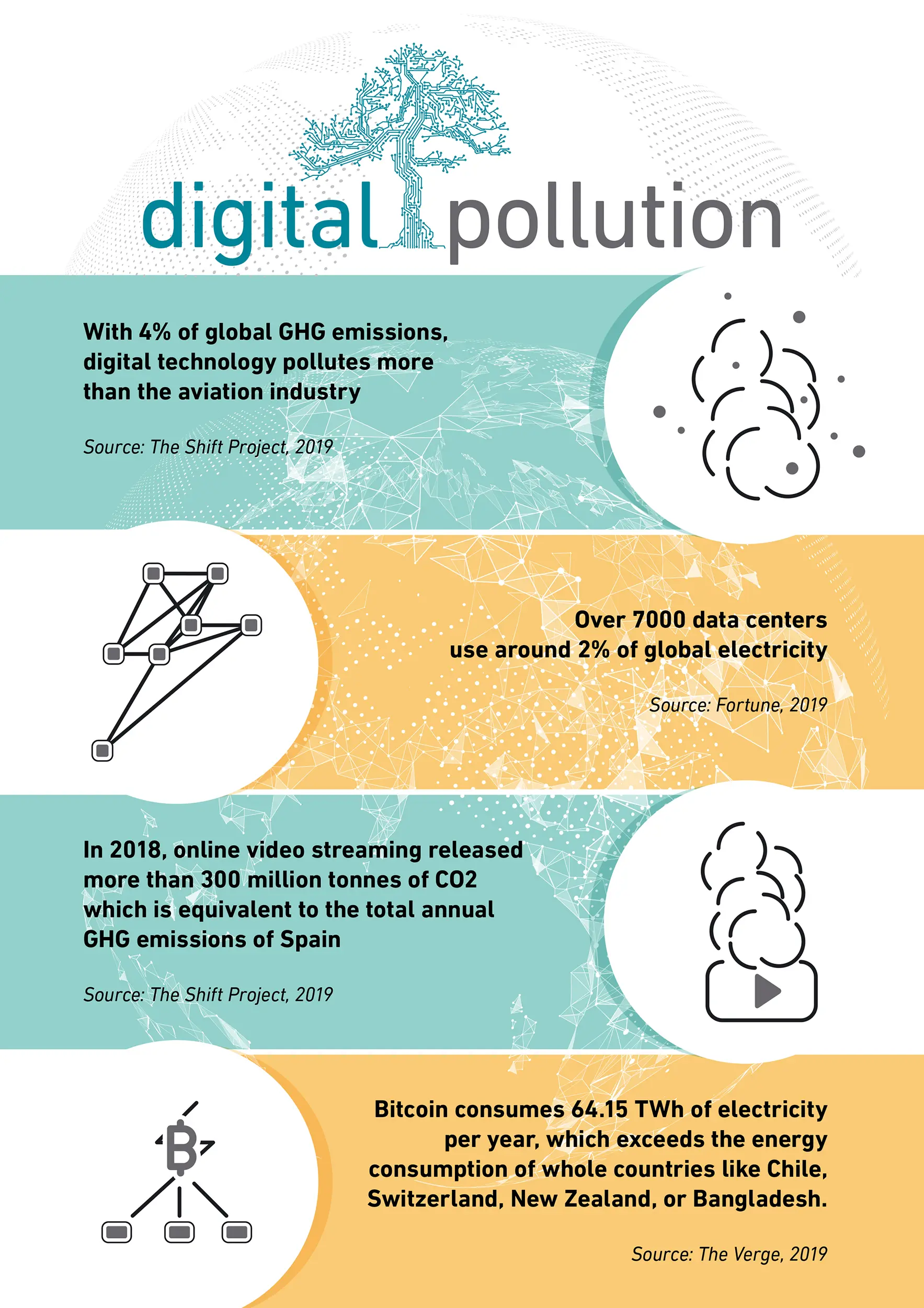
Written by Dipak
May 28, 2023 | 4 Min Read
In today’s fast-paced world of tech breakthroughs and our ever-deepening digital connection, the idea of sustainability is limitless. It’s no longer just about saving trees, it’s also about making sure our digital world is not contrasting our desires to save the planet. Digital sustainability is a fresh way of thinking that aims to combine technology, nature, and fairness into one systematic unit. We’re about to dig into what this means, why it matters worldwide, why we all need to chip in, and the path ahead.
Definition of Digital Sustainability and its Importance
Digital sustainability is all about smartly and responsibly handling our digital tools and habits to reduce their impact on the environment, make things fairer for everyone, and ensure that the digital world keeps on thriving. It’s a recognition that all our online actions, whether it’s scrolling through websites or swiping on our phones actually leave a big carbon footprint. So, it’s time to take action and make sure our digital lives are sustainable and eco-friendly.
The significance of digital sustainability cannot be overemphasized on in today’s world, seeing how our lives are deeply intertwined with digital technologies. The energy we consume, the electronic waste we generate, and the carbon emissions we produce through these technologies have a huge impact on our environment. Tackling these challenges head-on is absolutely crucial to safeguarding the health of our planet for both current and future generations.

Source: digwatch
Enabling Global Digital Sustainability
The impact of digital technologies on a global scale is striking, encompassing data centers, electronic devices, and communication networks that collectively contribute to significant energy consumption and carbon emissions. It is almost impossible to tackle this issue, especially since the infrastructures that power the digital world use non-renewable energy sources.
The United Nation’s Environment Programme’s CODES Action Plan collaboratively authored by a global community of over 1,000 contributors, launched on the occasion of the 50th anniversary of the Stockholm Conference on the Human Environment. This plan stands as the most comprehensive endeavor in exploring the intersection between digital technology and sustainability.
The plan outlines three fundamental shifts essential for implementing a sustainable digital transformation, they include:
In accordance with this plan, these shifts have the potential to reshape society and business models, steering them towards a more sustainable world. But this approach makes a lot of sense if you’re the United Nations or another globally-focused organization whose mission is to make a difference in the world. However, what if you’re a small or mid-sized business or nonprofit? Can you make a difference, too?
The answer is Yes. Here’s how;
Enabling Digital Sustainability Within Your Organization
Source: Strategy+business
Your organization might not have a global reach or be deeply rooted in emerging technologies, innovation labs, or standards development linked to the three pivotal shifts mentioned earlier. Nevertheless, your organization undoubtedly engages with lots of digital products and services that play a role in its operations. These encompasses:
Although your influence over third-party providers might be limited, you wield control over internal decision-making pertaining to a significant portion of the products and services highlighted above. This includes the power to choose your partners.
Adopting eco-friendly IT infrastructure and practices in your organization not only reduces environmental impact but also promotes cost savings and operational efficiency.
The Role of Individuals, Businesses, and Governments
Digital sustainability can never be achieved alone, it is a collaborative endeavor that encompasses the actions of individuals, businesses, and governments alike. Here’s how each sector can contribute towards digital sustainability.
Through these combined efforts, a more sustainable digital landscape can be crafted for the benefit of all.
Source: MDPI
Examples of Digital Sustainability Practices
Conclusion
As we venture into the path towards a sustainable future, the significance of digital sustainability emerges as a pivotal pillar. Incorporating sustainable practices and technologies into our digital realm is about safeguarding the environment. Through proactive measures undertaken by individuals, businesses, and governments, we have the capacity to bring about substantial change. By doing so, we can forge a seamless coexistence between the digital realm and the natural world, ensuring a future that thrives on harmony.
 Blog Posts
Blog Posts
Sep 25, 2023 • 4 Min Read
Jul 27, 2023 • 5 Min Read
Sep 2, 2025 • 7 Min Read